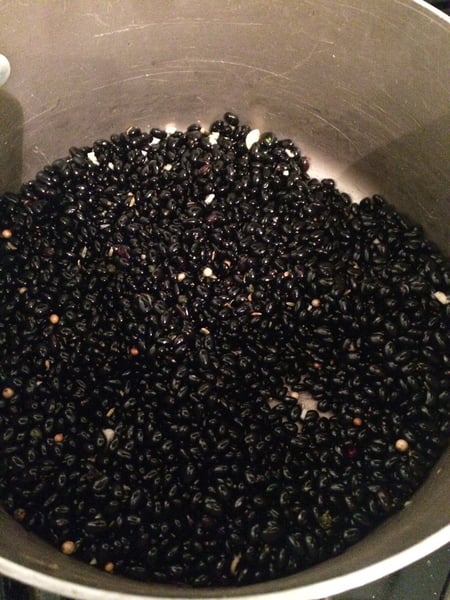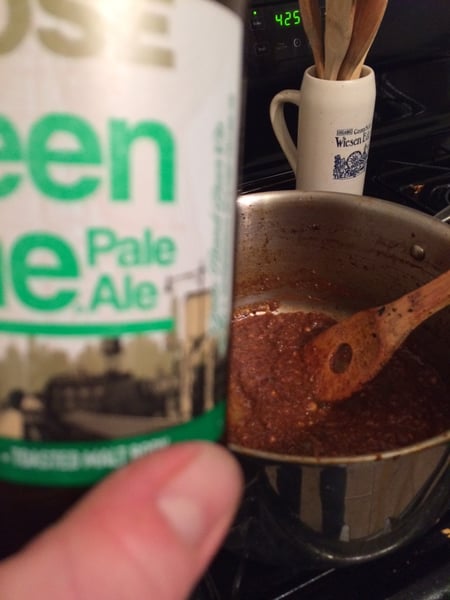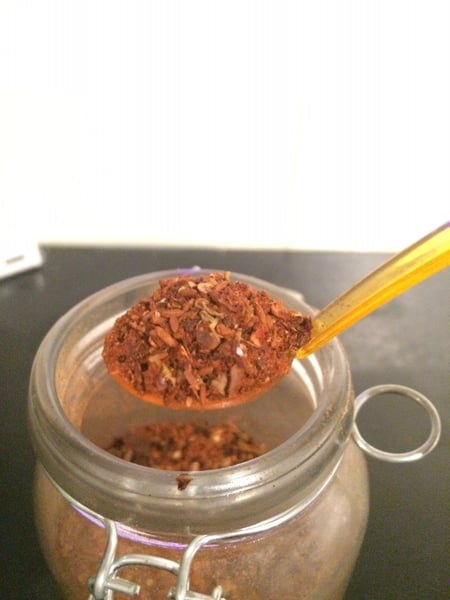I know, I know. You already have the world's greatest, undisputed, competition-winning-if-you’d-ever-submit-it chili recipe. You have that special tequnique of stirring counter-clockwise in your custom chili pot made from a WWII ammo box so you can tell everyone your secret ingredient is gunpowder (it’s not, it's probably cinnamon, anchovies, or dark chocolate). I’m not here to tell you that grandpa’s famous Red won’t soon be the new mascot of the Dallas Cowboys, but maybe I have an idea or two for getting a little more flavor in that bowl.
1. Make Your Own Chili Powder
Okay, if you're using a store-bought shaker of “chili powder” please get up from your computer, walk to your pantry, and throw it away. Let’s be honest, you probably bought it during the Regan administration and it's got the flavor content of a brown paper bag. Chili powder, to me, is the American equivalent to curry powder but it's not often given the same respect as its East Asian cousin. In India, many families have their own custom blend of spices and herbs that make up unique curry powders handed down through generations. The pride and tradition in these spice blends results in bold and original flavors even in the same dishes depending on which region or which house you're eating in.
Chili powder should be treated the same way: find your one-of-a-kind blend of dried chilies and toasted spices to make a homemade jar of goodness that will be the base of your signature chili. The first step is to find the chiles you want: Ancho and Mulato chilies for sweetness, New Mexico peppers for freshness, Chipotle and Guajillos for smokiness, and Cascabels and Arbols for heat. Round out your blend with cumin, paprika, garlic, and Spanish oregano. I make a tradition of roasting my spices and crushing and blending them into the perfect chili powder every fall so that I can jar it up and give it out as Christmas presents (keeping one jar for myself, of course.) The blend changes slightly depending on my preferences and what's available but the key as with most things is starting with quality ingredients.
2. Use Beans from a Bag, Not from a Can
Lots of chili purists will scoff at the idea of beans in the pot but I think if you skip the beans you are missing some serious flavor depth. Not only do beans offer the thickness you want but they also have the ability to absorb spices and balance the dish. I prefer black beans, but you can use pinto or kidney if you like. To make my beans, I pour them into big pot with celery seeds, coriander, garlic, bay leaf, and a little olive oil and let them toast on low heat for about half an hour before I add water. Then it's as simple as filling the pot with water, bringing it to a boil and lowering it to a simmer for an hour or two until your beans are nice and tender. As an added bonus, that bean water will be thick and flavorful and if you make your chili the same day, you can use it as a flavorful base on its own.

3. Roast your Chiles
One of the quickest ways to add depth of flavor when using fresh chiles is to fire roast them before adding them. I like to use a mix of poblanos, jalapeos, and habaneros. Either directly on a gas burner or under the broiler you can blast them with direct heat until they are black and tender. Immediately after you take them off the heat, put them in a large bowl and cover it with plastic wrap. The heat and moisture will steam the skins and allow you to peel off the charred outer layer before chopping them and adding them to the pot. Check out The Chopping Block's Owner/Chef Shelley Young's video on this technique:
4. Vary your Meat
If you are relying on ground beef to be the sole protein in your bowl then you are missing some solid flavor and texture opportunities. I use a blend of shredded taco beef, ground lamb, and fresh chorizo as the meat trio for my chili. Too much sausage or fat will leave your dish too rich and greasy, so I try to create a balance and drain my grease after I brown my meat.
5. A Hoppy Bottle of Beer Brings it all Together
After I brown my meat, I reach for a hoppy IPA (probably my second or third by this point) to deglaze my pan. You want something with some bold flavors on its own to hold up to the spiciness of your chili so I usually find an IPA or a thick Lager does the trick. Plus after you use one for your chili, you get to finish the rest of the six pack at dinner time for a perfect pairing.
 The most important ingredient in chili as well as most of those deep savory fall dishes is time. Make sure you have a free day to use fresh ingredients and let them simmer and blend to perfection. To learn more about blending flavors and slow cooking check out our Cold Weather Soups and Stews or Cast Iron and Crock Pot Cookery demonstrations or our upcoming Stew and Ragu hands-on cooking class, all of which dive into using flavorful building blocks to assemble a foundation of flavor.
The most important ingredient in chili as well as most of those deep savory fall dishes is time. Make sure you have a free day to use fresh ingredients and let them simmer and blend to perfection. To learn more about blending flavors and slow cooking check out our Cold Weather Soups and Stews or Cast Iron and Crock Pot Cookery demonstrations or our upcoming Stew and Ragu hands-on cooking class, all of which dive into using flavorful building blocks to assemble a foundation of flavor.
I encourage you to experiment to find your own blend, but here’s my chili powder recipe for your reference.
Chili Powder
3 dried ancho chiles, stemmed seeded and sliced
3 dried Guajillo chiles, stemmed seeded and sliced
3 dried New Mexico chiles, stemmed seeded and sliced
3 dried Cascabel chiles, stemmed seeded and sliced
2 tablespoon cumin seeds
1 tablespoon whole coriander
1 tablespoon whole black peppercorns
2 tablespoons garlic powder
1 tablespoon dried mexican oregano
1 teaspoon smoked paprika
- Pan toast the chiles until aromatic and cool. Use a food processor to create a fine powder.
- Pan toast cumin seeds, coriander, and peppercorns until aromatic. Use a spice mill or food processor to powder fresh spices.
- Combine chiles, milled spices, garlic powder, oregano, and paprika in jar and store in a cool dry place for up to six months.













